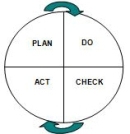 As the saying goes, “If you do what you have always done, you will probably get what you have always gotten.” As a business leader in the distribution industry, you never want to push products through an incapable system. If your system does not provide the outcomes you are seeking, it is time for a fresh approach to the way you learn, develop, and implement strategic change.
As the saying goes, “If you do what you have always done, you will probably get what you have always gotten.” As a business leader in the distribution industry, you never want to push products through an incapable system. If your system does not provide the outcomes you are seeking, it is time for a fresh approach to the way you learn, develop, and implement strategic change.
Specifically, it is important to continually understand and improve upon:
- Order fulfillment and lead times
- Credit risk associated with extending credit
- Volume and payment term discounts
- Gross profit by product line
- Transportation costs
- Waste in the processes that are deployed
- Revenues generated per Full Time Equivalent
To identify and address issues and waste that impact your business on a daily basis, it is helpful to utilize a proven methodology called Plan – Do – Check – Act (PDCA):

- PLAN. Identify your key issues and barriers to achieving them. Develop a clear and concise plan to “deal with the elephant in the room.”
- DO. Surround yourself with the required skill sets necessary to implement strategic change. Be certain to follow the accountability measurements outlined in your plan.
- CHECK. Make sure you have access to a support network to discuss hurdles and challenges you may face when implementing changes and determine whether you are achieving desired results.
- ACT. Adapt and refine your approach to increase the probability of change.
Waste Reduction – Issue Ranking Diagnostic
A common flaw in the waste reduction process is dealing with the symptoms of a problem rather than addressing the root cause. In today’s fast-paced environment, it can often seem easier to address the trivial many (less time required) rather than investing the time necessary to mitigate the significant few. The obstacles and challenges that are apparent to many tend to be shuffled to the side, causing quantifiable results to be achieved only 30 percent of the time.
At Kreischer Miller, we have developed a Waste Reduction – Issue Ranking Diagnostic, which is a defined process that facilitates client meetings with various levels of the company to identify key issues and formulate strategies designed to render the most significant economic impact. In utilizing this process with our distribution clients, we have helped them:
- Reduce the number of stock keeping units (SKU) maintained in inventory
- Institute required credit applications and background checks of customers
- Take advantage of vendor discounts by utilizing a working capital line of credit
- Cease the sale of a product with low margins and limited upside potential
- Redesign the warehouse based on purchasing tendencies
- Review and replace manual processes with available technology
We partner with clients to maximize the quantifiable results of waste reduction and issue ranking. Click here for a view of the diagnostic tools we utilize during the process.
Robert S. Olszewski can be reached at Email or 215.441.4600.

